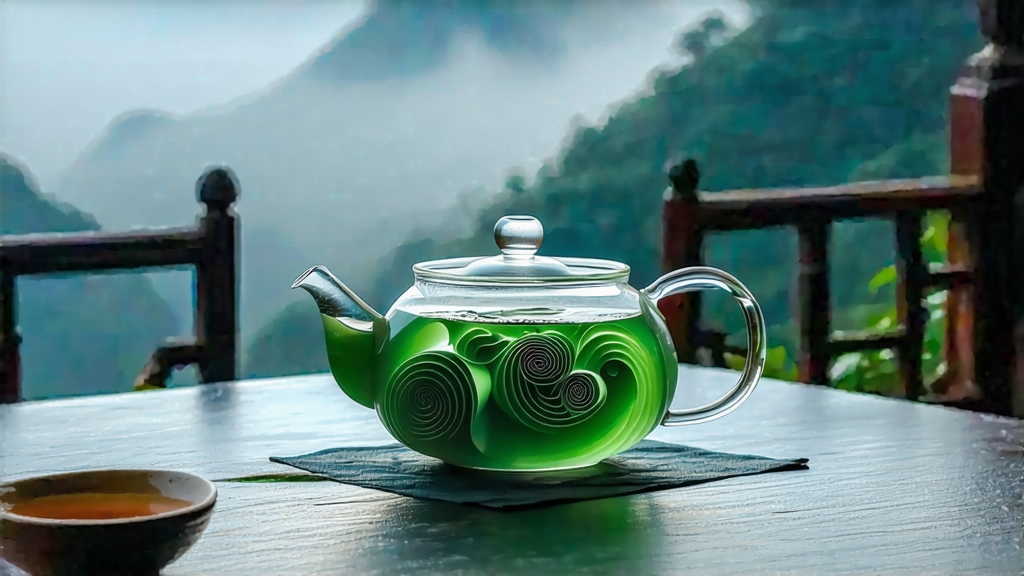
Tucked between the mist-laden peaks of Lake Tai’s East Dongting Mountain and the apricot and plum groves of Jiangsu Province, Biluochun—literally “Green Snail Spring”—has captivated Chinese scholars, emperors, and poets for over a thousand years. To the global tea traveler it offers a master-class in delicacy: the smallest leaf, the most fragrant cup, the most exacting craft. This essay unpacks the cultivar’s history, micro-terroirs, hand-making rituals, brewing physics, and tasting lexicon so that you, wherever you are, can coax the same peach-blossom sweetness that once earned it the imperial tribute status.
-
Historical vignette
The first written record appears in the Tang Dynasty’s “Tea Canon” (ca. 840 CE) under the humbler name “Xia Sha Ren Xiang” (“Scary Fragrance”), so dubbed because a nun, startled by its penetrating aroma, dropped her picking basket. During the Kangxi reign (1662-1722) the emperor, touring the south, sampled the tea on Dongting’s peak and rechristened it Biluochun to honor its tight spiral shape and spring harvest. From that moment the leaf rode the dragon-boat courier route to Beijing’s Forbidden City, sealing its fate as one of China’s Ten Famous Teas. -
Terroir and cultivar mosaic
Dongting’s East and West mountains rise from Lake Tai like islands of loamy, slightly acidic pH 4.5–5.5 quartz-sand soil. Morning lake vapor condenses into fog, filtering UV light and slowing photosynthesis; the result is a higher amino-acid-to-catechin ratio, hence the tea’s famed umami sweetness. Two clonal variations dominate: the local “Dongting群体种” (qunti zhong) shrub, cold-hardy and peach-scented, and the newer F1 hybrid “Zao Bei” that flushes seven days earlier. Above 300 m elevation, wild tea trees intermingle with loquat, plum, and citrus, their shared pollinator guilds adding floral volatiles that the leaf adsorbs while still on the bush. -
Picking calendar and leaf hierarchy
The harvest window is brutally short: from Qing Ming (early April) to Grain Rain (late April), often only 10–12 days. Pickers climb bamboo ladders at dawn when dew still pearls, selecting the standard “one bud with one unfolding leaf” (length ≤ 2.5 cm, weight ≤ 0.3 g per 100 shoots). The top grade, Supreme Biluochun, demands 60 000 such shoots to yield 500 g finished tea—roughly three hours of nimble-fingered plucking by a veteran team. -
Craft: the six-step spiral
a. Withering: trays of leaves rest 2–3 h in shaded draft, losing 8 % moisture and grassy edge.
b. Kill-green: woks heated to 180 °C receive 250 g batches; the maker tosses, flips, and presses for 3–4 min, deactivating PPO enzymes while locking in jade color.
c. Rolling: temperature drops to 70 °C; fingers form the “strip—loop—strip” cycle, coaxing the bud to curl like a snail shell.
d. First drying: 60 °C for 10 min reduces moisture to 30 %.
e. Re-rolling: the most artistic step; artisans roll leaf against wok with ten fingers in clockwise spirals, bonding pubescent down to the shoot tip so white tips remain visible in the final cup.
f. Final drying: charcoal embers at 50 °C for 40 min drop water activity to ≤ 6 %, shelf-stable yet still pliable. -
Grading rubric
Appearance: silver-white tips densely covered in trichomes; color “jade hidden in snow”; uniformity within 0.5 mm.
Aroma: dry leaf emits peach, magnolia, and fresh baby corn; when brewed, a top note of “lake air” minerality appears.
Liquor: champagne-yellow with iridescent ring; clarity ≥ 95 NTU.
Taste: sweet-thick arrival, zero astringency, lingering asparagus-cream finish ≥ 30 s.
Leaf bottom: tender single sprout, light green, elastic enough to write on with a fingernail without tearing. -
Brewing protocol for the international kitchen
Water: low-T